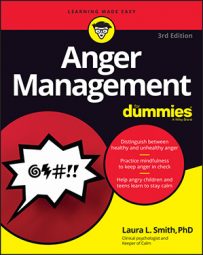To get your anger under better control, figure out what sets you off. In the following table, the broad categories of common triggers are listed. The first column lists the trigger categories.
In the second column, you rate each trigger category from 1 to 5 in terms of how often it has occurred for you. For example, a rating of 1 means you rarely or never encounter this anger trigger. A rating of 3 means you encounter this trigger moderately often. A 5 means you run into this problem almost all the time.
In the third column, rate how problematic the trigger is for you. A 1 indicates you have little concern with this issue. For example, some people just don’t get stressed out by time pressures. Others find time pressure moderately problematic and would rate the item as a 3. A few people blow their stack on a daily basis due to time-pressure problems, and they’d rate them as a 5.
Triggers that occur often, and that you feel are highly problematic, represent your personal hot buttons.
| Trigger | Rating of How Often | Rating of How Bad |
|---|---|---|
| Unfairness | 1 2 3 4 5 | 1 2 3 4 5 |
| Time pressures | 1 2 3 4 5 | 1 2 3 4 5 |
| Dishonesty or disappointment | 1 2 3 4 5 | 1 2 3 4 5 |
| Threats to self-esteem | 1 2 3 4 5 | 1 2 3 4 5 |
| Prejudice or discrimination | 1 2 3 4 5 | 1 2 3 4 5 |
| Getting attacked | 1 2 3 4 5 | 1 2 3 4 5 |

